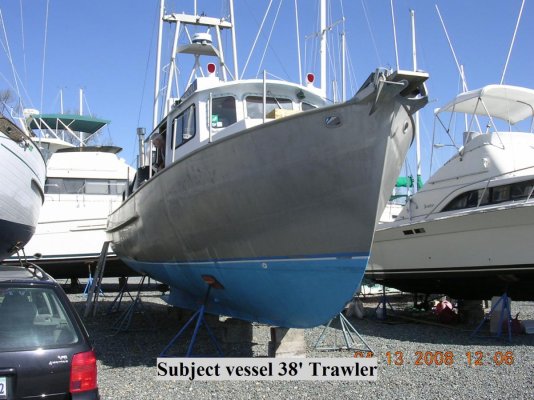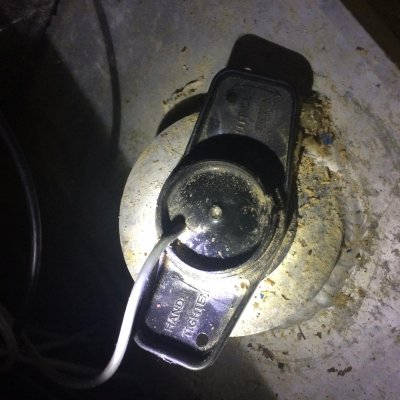Gulf Comanche
Guru
- Joined
- Dec 16, 2007
- Messages
- 1,045
- Location
- U.S.A.
- Vessel Name
- Old School
- Vessel Make
- 38' Trawler custom built by Hike Metal Products
Greetings all:
My 23 year old depth finder died and I am working on replacing it. The biggest issue is that the boat needs to be hauled in order to change out the transducer. I have attached 2 photos to better explain. On the outside of the boat, below the forward jack stand, you can see a small vertical sleeve sticking down. The other photo is inside the boat and you can see the top of the vertical sleeve and top of transducer with the wire coming out which is 2 inches in diameter. My question here regards "marine sealant". Instructions call for the use of marine sealant on the base of the transducer where it slides into the sleeve. While the boat is hauled it will be pressure washed and I'll install the transducer; the boat is then put back in the water when washing is finished. Every sealant I've researched, excepting butyl tape, has a minimum cure time of 24 hours and I can't wait that long. I've thought about having a gasket made to fit the transducer base but want y'alls opinion on how to handle this issue. Thanks in advance,
Mike
My 23 year old depth finder died and I am working on replacing it. The biggest issue is that the boat needs to be hauled in order to change out the transducer. I have attached 2 photos to better explain. On the outside of the boat, below the forward jack stand, you can see a small vertical sleeve sticking down. The other photo is inside the boat and you can see the top of the vertical sleeve and top of transducer with the wire coming out which is 2 inches in diameter. My question here regards "marine sealant". Instructions call for the use of marine sealant on the base of the transducer where it slides into the sleeve. While the boat is hauled it will be pressure washed and I'll install the transducer; the boat is then put back in the water when washing is finished. Every sealant I've researched, excepting butyl tape, has a minimum cure time of 24 hours and I can't wait that long. I've thought about having a gasket made to fit the transducer base but want y'alls opinion on how to handle this issue. Thanks in advance,
Mike


